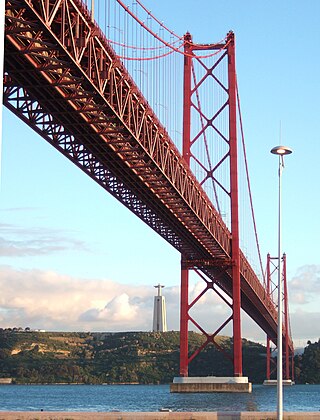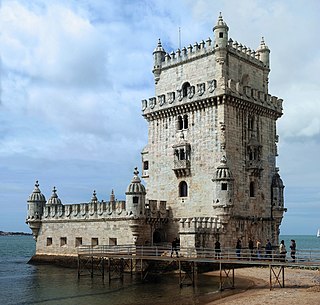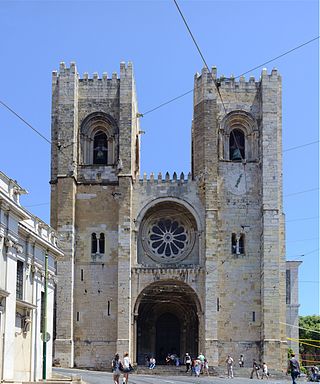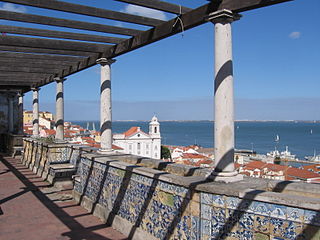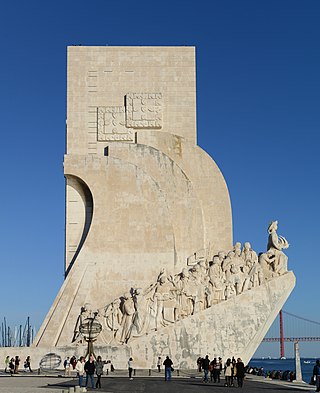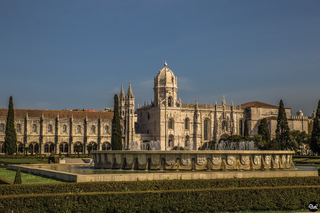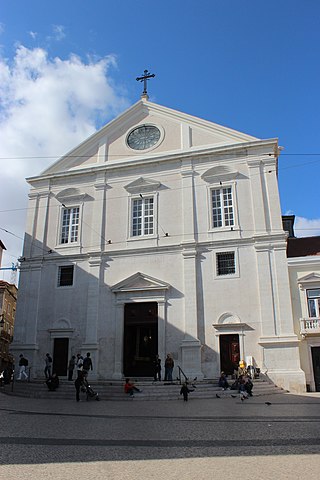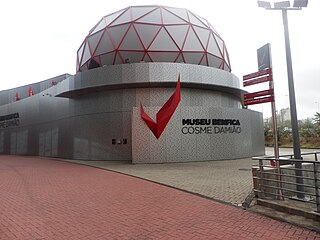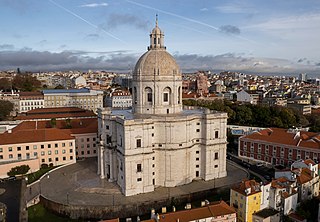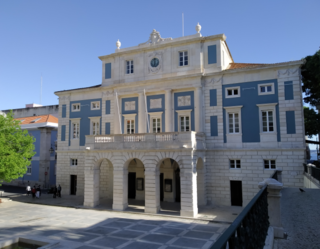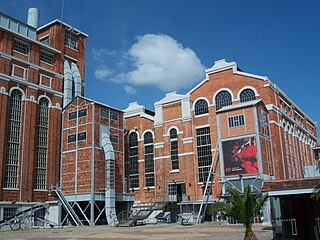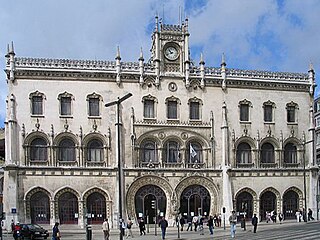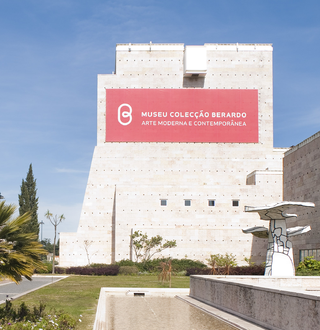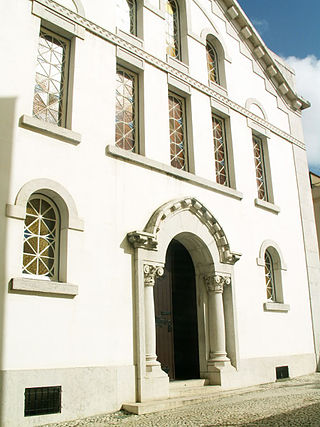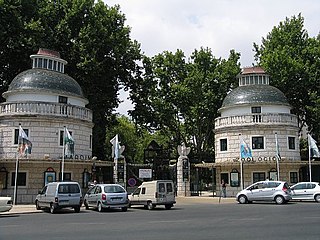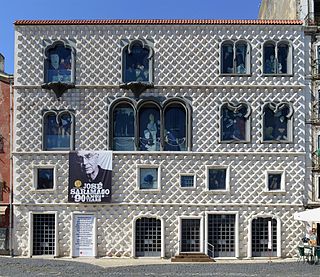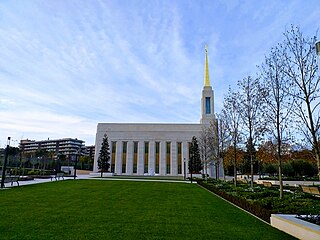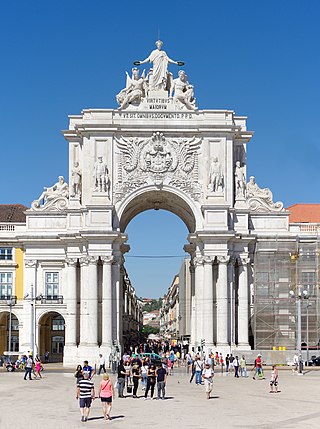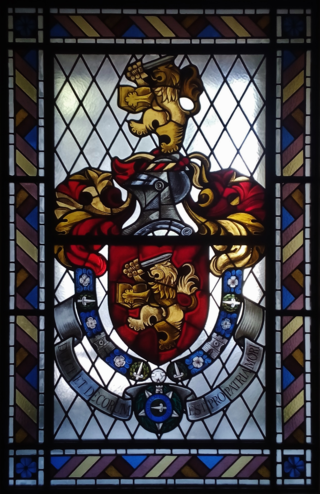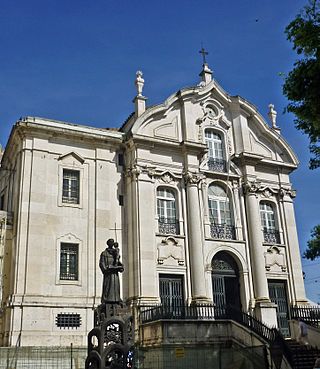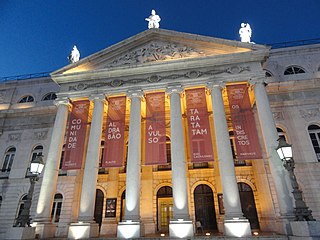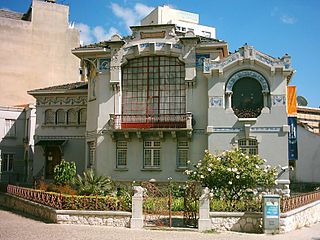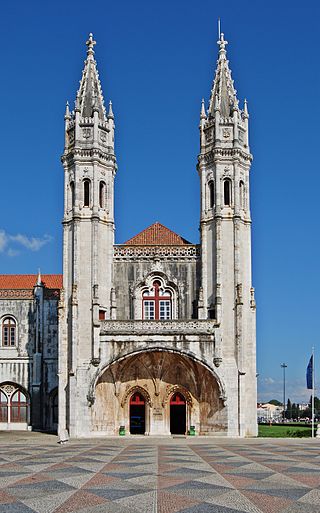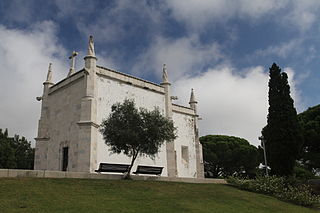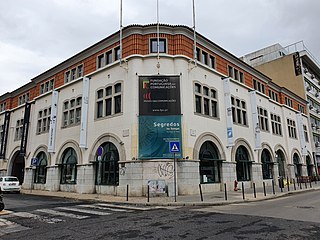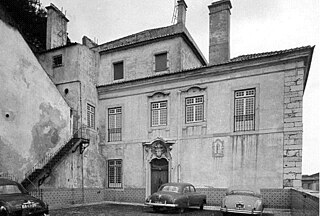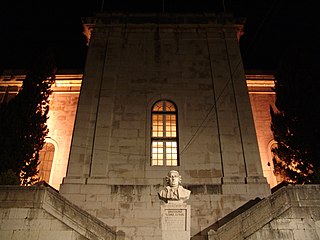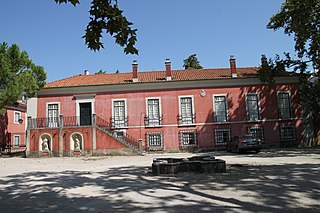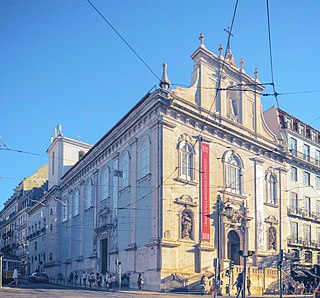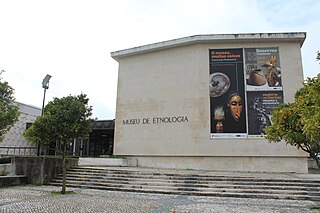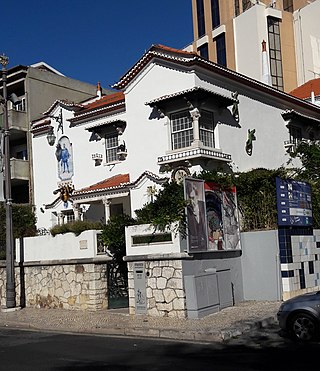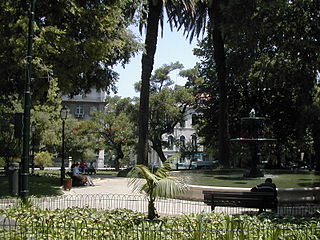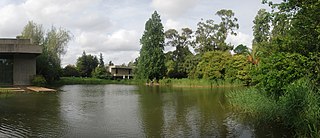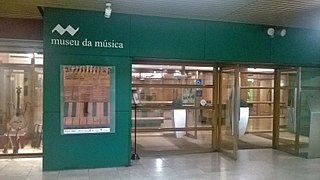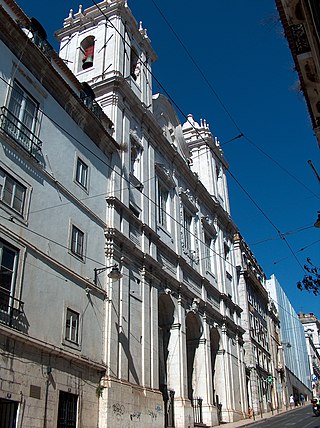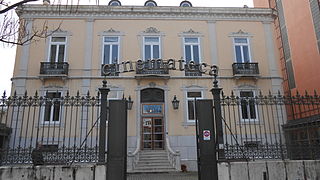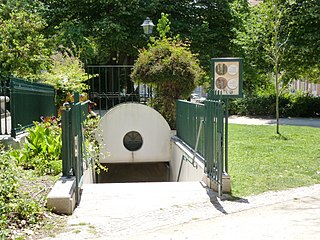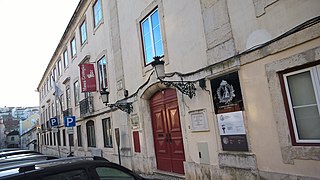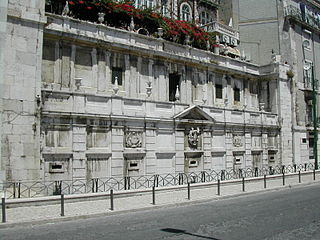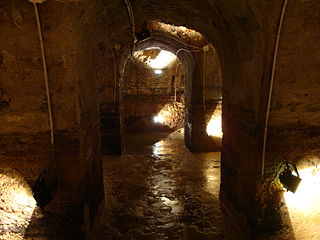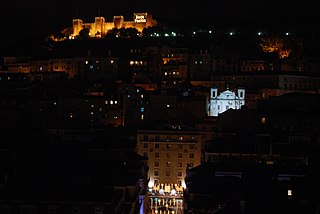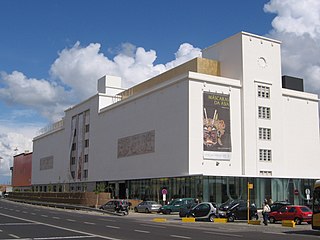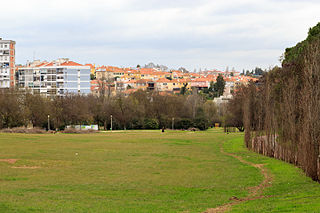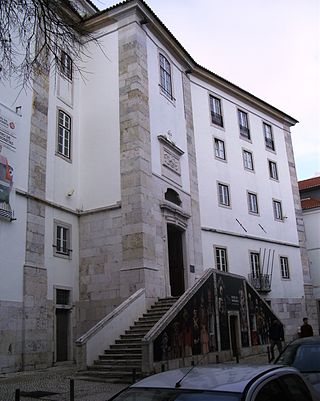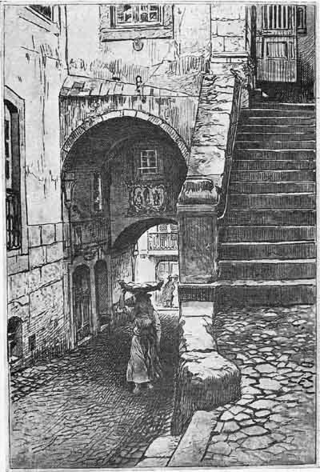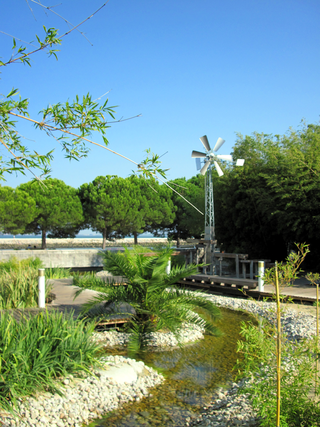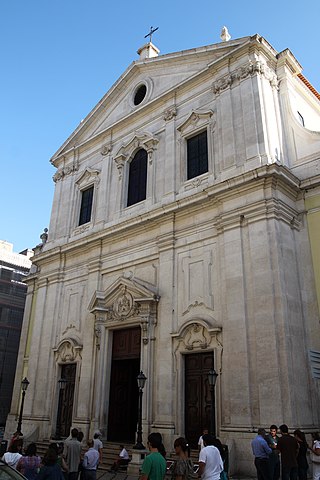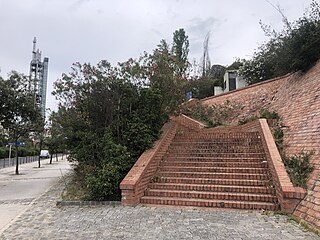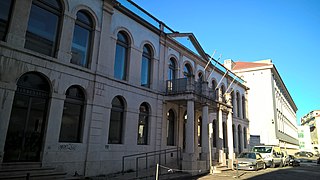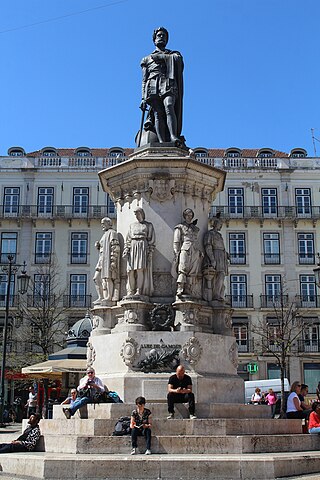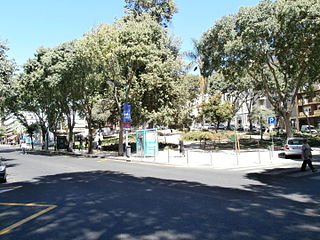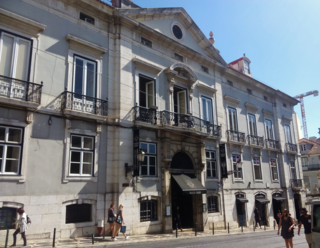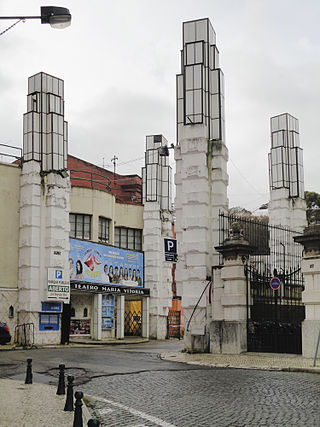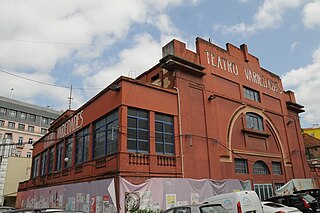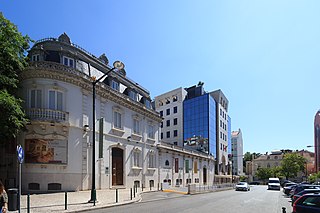75 Sights in Lisbon, Portugal (with Map and Images)
Legend
Premium Sights
Book tickets, guided tours and activities in Lisbon.
Guided Free Walking Tours
Book free guided walking tours in Lisbon.
Welcome to your journey through the most beautiful sights in Lisbon, Portugal! Whether you want to discover the city's historical treasures or experience its modern highlights, you'll find everything your heart desires here. Be inspired by our selection and plan your unforgettable adventure in Lisbon. Dive into the diversity of this fascinating city and discover everything it has to offer.
Sightseeing Tours in LisbonActivities in LisbonThe 25 de Abril Bridge is a suspension bridge connecting the city of Lisbon, capital of Portugal, to the municipality of Almada on the left (south) bank of the Tagus River. It has a main span length of 1,013 metres (3,323 ft), making it the 48th longest suspension bridge in the world.
Belém Tower, officially the Tower of Saint Vincent is a 16th-century fortification located in Lisbon that served as a point of embarkation and disembarkation for Portuguese explorers and as a ceremonial gateway to Lisbon. This tower symbolizes Portugal's maritime and colonial power in early modern Europe. It was built during the height of the Portuguese Renaissance, and is a prominent example of the Portuguese Manueline style, but it also incorporates other architectural styles, such as the minarets, which are inspired by Moorish architecture. The structure was built from lioz limestone and is composed of a bastion and a 30-metre (100 ft), four-storey tower.
Wikipedia: Belém Tower (EN), Website, Website Sipa, Heritage Website Sipa, Whc Website, Heritage Website

Pastel de nata is a Portuguese egg custard tart pastry, optionally dusted with cinnamon. Outside Portugal, they are particularly popular in other parts of Western Europe, Asia and former Portuguese colonies, such as Brazil, Mozambique, Macau, Goa and East Timor. The Macanese variant has been adopted by KFC and is available in regions such as mainland China, Hong Kong, Taiwan, Thailand and Singapore. In Indonesia, this pastry is especially popular in Kampung Tugu, Jakarta, a culturally Portuguese (Mardijker) enclave.
The Cathedral of Saint Mary Major, often called Lisbon Cathedral or simply the Sé, is a Roman Catholic cathedral located in Lisbon, Portugal. It is the oldest church in the city, built in 1147. The cathedral has survived many earthquakes and has been modified, renovated and restored several times, resulting in a mix of different architectural styles. It is the seat of the Patriarchate of Lisbon, and has been classified as a National Monument since 1910.
Wikipedia: Lisbon Cathedral (EN), Heritage Website Sipa, Heritage Website
The Santa Luzia Viewpoint has a wide view over Alfama and the Tagus River. The characteristic points, from left to right, are the dome of Santa Engrácia, the Church of St. Stephen, and the two white towers of the Church of St. Michael.
The Monument of the Discoveries is a monument on the northern bank of the Tagus River estuary, in the civil parish of Santa Maria de Belém, Lisbon. Located along the river where ships departed to explore and trade with India and the Orient, the monument celebrates the Portuguese Age of Discovery during the 15th and 16th centuries.
7. MEO Arena

MEO Arena is a multi-purpose indoor arena in Lisbon, Portugal. The arena is among the largest indoor arenas in Europe and the largest in Portugal with a capacity of 20,000 people and was built in 1998 for Expo '98.
8. Monastery of the Hieronymites
The Jerónimos Monastery or Hieronymites Monastery is a former monastery of the Order of Saint Jerome near the Tagus river in the parish of Belém, in the Lisbon Municipality, Portugal. It became the necropolis of the Portuguese royal dynasty of Aviz in the 16th century but was secularized on 28 December 1833 by state decree and its ownership transferred to the charitable institution, Real Casa Pia de Lisboa.
9. National Archaeology Museum
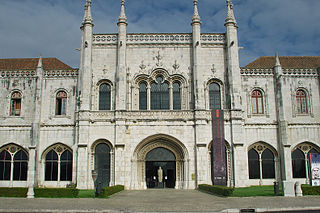
The National Museum of Archaeology is the largest archaeological museum in Portugal and one of the most important museums devoted to ancient art found in the Iberian Peninsula. Located in Lisbon, the museum was founded in 1893 by the archaeologist José Leite de Vasconcelos. The museum is located in the western wing of the Jeronimos Monastery where the monks had their dormitory. The museum is built in the Neo-Manueline style and was officially opened in 1906.
Wikipedia: National Museum of Archaeology, Lisbon (EN), Website, Website
10. Museu-Igreja de São Roque
The Igreja de São Roque is a Catholic church in Lisbon, Portugal. It was the earliest Jesuit church in the Portuguese world, and one of the first Jesuit churches anywhere. The edifice served as the Society's home church in Portugal for over 200 years, before the Jesuits were expelled from that country. After the 1755 Lisbon earthquake, the church and its ancillary residence were given to the Lisbon Holy House of Mercy to replace their church and headquarters which had been destroyed. It remains a part of the Holy House of Mercy today, one of its many heritage buildings.
11. Santa Justa Lift
The Santa Justa Lift, also called Carmo Lift, is an elevator, or lift, in the civil parish of Santa Maria Maior, in the historic center of Lisbon, Portugal. Situated at the end of Rua de Santa Justa, it connects the lower streets of the Baixa with the higher Largo do Carmo.
Wikipedia: Santa Justa Lift (EN), Heritage Website Sipa, Heritage Website
12. Museu Cosme Damião
The Museu Benfica – Cosme Damião is the museum of Portuguese sports club S.L. Benfica. Named after Cosme Damião, one of the club's founders in 1904, the museum was inaugurated on 26 July 2013 under the presidency of Luís Filipe Vieira and opened to the public on 29 July, one year and three months after the start of construction.
13. Panteão Nacional
The Church of Santa Engrácia is a 17th-century monument in Lisbon, Portugal. Originally a church, it was converted into the National Pantheon, in which important Portuguese personalities are buried. It is located in the Alfama neighbourhood, close to another important Lisbon monument, the Monastery of São Vicente de Fora.
14. National Theatre São Carlos
The Teatro Nacional de São Carlos is an opera house in Lisbon, Portugal. It was opened on June 30, 1793 by Queen Maria I as a replacement for the Tejo Opera House, which was destroyed in the 1755 Lisbon earthquake. The theatre is located in the historical center of Lisbon, in the Chiado district.
Wikipedia: Teatro Nacional de São Carlos (EN), Website, Heritage Website Sipa, Heritage Website
15. Aqueduto das Águas Livres
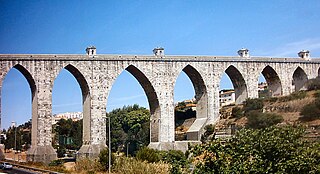
The Águas Livres Aqueduct is a historic aqueduct in the city of Lisbon, Portugal. It is one of the most remarkable examples of 18th-century Portuguese engineering. The main course of the aqueduct covers 18 km, but the whole network of canals reaches nearly 58 km.
16. MAAT - Tejo Power Station
Tejo Power Station is a cultural centre that presents the evolution of energy with a Museum of Science and Industrial Archaeology concept, where themed and experimental exhibits live side by side with a great variety of cultural events. Located in the Belém area on terrain Lisbon usurped from the Tagus river at the end of the 19th century, in one of the city's areas with the greatest concentration of historical monuments where one can find, among others, the Jerónimos Monastery, the Belém Cultural Centre, the Tower of Belém, the Padrão dos Descobrimentos, the Portuguese Presidential Palace and Museum, the Coach Museum or the Cordoaria Nacional . A building classified as a Public Interest Project, the Electricity Museum unfolds along the perimeter of the old thermoelectric plant – the Tejo Power Station, which illuminated the city of Lisbon for more than four decades.
17. Estação Ferroviária de Lisboa - Rossio
The Rossio Railway Station is a railway station in Lisbon, Portugal, located in the Rossio square. The station was formerly known as Estação Central and that designation still appears in its façade. Trains gain access to the station, which is in the central urban area of Lisbon, through a tunnel which is over 2.9 km (1.8 mi) long.
Wikipedia: Rossio railway station (EN), Heritage Website Sipa, Heritage Website
18. Museu Coleção Berardo
The Berardo Collection Museum was a museum of modern and contemporary art in Belém, a district of Lisbon, Portugal. It was replaced by the Contemporary Art Museum - Centro Cultural de Belém in January 2023.
19. Sinagoga Shaaré Tikva
The Lisbon Synagogue, formally the Synagogue Shaaré Tikvah, is a Jewish congregation and synagogue, located at 59 Rua Alexandre Herculano, in the civil parish of Santo António, in the municipality of Lisbon, Portugal.
20. Jardim Zoológico de Lisboa
Lisbon Zoo is a zoological garden in Lisbon, Portugal. It was founded in 1884. The zoo was originally located in the park of São Sebastião da Pedreira. The zoo moved once in 1894 and once again in 1905 to its current location at Quinta das Laranjeiras, in Sete Rios.
21. Casa dos Bicos
The Casa dos Bicos is a historical house in the civil parish of Santa Maria Maior, in the Portuguese municipality of Lisbon. The house, built in the early 16th century in the Alfama neighbourhood, has a curious façade of spikes, influenced by Italian Renaissance palaces and Portuguese Manueline styles. It survived the disastrous 1755 Lisbon earthquake that destroyed much of the city, but over time was abandoned as a residence and used as a warehouse. After a 20th-century renovation, it became the headquarters of the José Saramago Foundation and a location of the Museum of Lisbon.
22. Lisbon Portugal Temple
The Lisbon Portugal Temple is a temple of the Church of Jesus Christ of Latter-day Saints in the civil parish of Parque das Nações, in the Portuguese municipality of Lisboa. It is the first and only LDS temple constructed in Portugal.
23. Rua Augusta Arch
The Rua Augusta Arch is a stone, memorial arch-like, historical building and visitor attraction in Lisbon, Portugal, on the Praça do Comércio. It was built to commemorate the city's reconstruction after the 1755 earthquake. It has six columns and is adorned with statues of various historical figures. Significant height from the arch crown to the cornice imparts an appearance of heaviness to the structure. The associated space is filled with the coat of arms of Portugal. The allegorical group at the top, made by French sculptor Célestin Anatole Calmels, represents Glory rewarding Valor and Genius.
24. Palácio do Paço Real da Bemposta
The Military Academy is a Portuguese military establishment, which has the ability to confer educational qualifications equivalent to a university. It develops activities of teaching, research and support for the communities with the purpose of training and forming officers for the Portuguese Army and the Republican National Guard.
25. Saint Anthony's Church
The Church of Saint Anthony of Lisbon is a Roman Catholic church located in Lisbon, Portugal. It is dedicated to Saint Anthony of Lisbon. According to tradition, the church was built on the site where the saint was born, in 1195. The church is classified as a National Monument.
Wikipedia: Church of Saint Anthony of Lisbon (EN), Heritage Website Sipa, Heritage Website
26. Teatro Nacional Dona Maria II
The Queen Maria II National Theatre is a theatre in Lisbon, Portugal. The historic theatre is one of the most prestigious Portuguese venues and is located in the Rossio square, in the centre of the city.
Wikipedia: D. Maria II National Theatre (EN), Heritage Website Sipa, Heritage Website
27. Jardim Botânico de Lisboa
The Botanical Garden of the University of Lisbon (JBUL) is located in the parish of Santo António, in Lisbon. It arose from the need to create a practical complement in the teaching and research of botany, at the then Polytechnic School of Lisbon.
Wikipedia: Jardim Botânico de Lisboa (PT), Website, Heritage Website Sipa, Heritage Website
28. Casa-Museu Doutor Anastácio Gonçalves
The Museum-Residence of Dr. Anastácio Gonçalves is a former residential home built in the Art Nouveau style that has been converted into a museum of nineteenth-century Portuguese painting and of Art Nouveau art and artifacts. It is located in the civil parish of Avenidas Novas, in the municipality and Portuguese capital of Lisbon.
Wikipedia: Casa-Museu Dr. Anastácio Gonçalves (EN), Heritage Website Sipa, Website, Heritage Website
29. Navy Museum
The Navy Museum is a maritime museum in Lisbon, dedicated to all aspects of the history of navigation in Portugal. The museum is administered by the Portuguese Navy and is located in the tourist district of Belém. It occupies a part of the neo-Manueline western wing of the Jerónimos Monastery with the National Museum of Archaeology, as well as a modern annex built to the north of the monastery.
30. Capela de São Jerónimo
The Hermitage of Restelo, alternately Chapel of Saint Jerome, is a hermitage in the civil parish of Santa Maria de Belém, in the municipality of Lisbon. The religious architecture has Manueline and revivalist Neo-manueline elements, consisting of a single-nave structure with a vaulted ceiling and surrounded by a modernist landscape, as evidenced by a preoccupation with choice of plants and manicured environment, in order to create a zone of protection for the hermitage.
Wikipedia: Restelo Hermitage (EN), Website, Heritage Website Sipa, Heritage Website
31. Palácio Mendonça
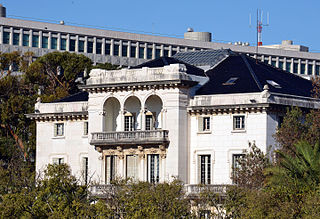
The Palacete Mendonça is located on Rua Marquês de Fronteira in São Sebastião da Pedreira, current parish of Avenidas Novas, in Lisbon. It was designed between 1900 and 1902 by the architect Ventura Terra for Henrique José Monteiro de Mendonça.
32. Marquês de Pombal
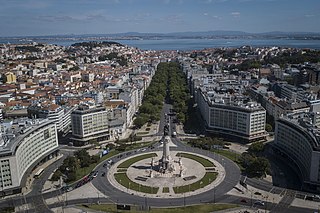
The Marquis of Pombal Square is an important roundabout in the city of Lisbon, Portugal. It is located between the Avenida da Liberdade and the Eduardo VII Park in the former parish of Coração de Jesus and in the quarter of Santo António.
33. Museu das Comunicações
The Museu das Comunicações is a technology museum in Lisbon, Portugal. Dedicated to promote the study, conservation and dissemination of the historical, scientific and technological communications heritage, The museum focuses on the History of communication, particularly in Portugal
34. Palácio Vila-Flor
It was initially known as Casas da Costa do Castelo and later Palácio da Costa, and only later was it called Palácio Vila Flor. It owes its name to the fact that at the end of the Monarchy, at the beginning of the century. It was bought and the last counts of Vila Flor lived there, to whom it currently belongs.
35. Reservatório da Mãe d'Água das Amoreiras
The Mãe d'Água das Amoreiras Reservoir, better known as just Mãe d'Água das Amoreiras, is the deposit that collects the water from the Águas Livres aqueduct, in the district of Lisbon. It was designed in 1745 and built in Jardim das Amoreiras, being completed in 1834.
36. Senhorio dos Lagares d'El-Rei
The Quinta dos Lagares d'El-Rei, is a quinta and manor house on the Portuguese estate of Quinta dos Lagares d'El-Rei, part of the Senhorio dos Lagares d'El-Rei, a feudal fiefdom, seated in the civil parish of Alvalade, in the municipality of Lisbon.
37. Sophia de Mello Breyner Andersen Belvedere
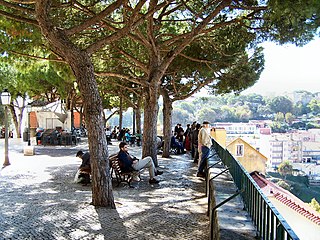
The Sophia de Mello Breyner Andresen Viewpoint, formerly the Miradouro da Graça, is located in the parish of São Vicente (Graça), in the old churchyard of the Church of the Convent of Graça in Lisbon.
Wikipedia: Miradouro Sophia de Mello Breyner Andresen (PT), Website
38. Igreja do Loreto
The Church of Loreto is located next to Largo do Chiado, on the corner of Rua da Misericórdia, in Lisbon. The author of the project to build this church was José da Costa e Silva. With the earthquake of 1755 the temple suffered great damage, having been rebuilt in 1785.
39. National Museum of Ethnology
The National Museum of Ethnology is an ethnology museum in Lisbon, Portugal. The museum holds in its collections the most relevant ethnographic heritage in Portugal. It is responsible for the safeguarding and management of nearly half a million items.
Wikipedia: National Museum of Ethnology (Portugal) (EN), Website
40. Rafael Bordalo Pinheiro Museum
Rafael Bordalo Pinheiro Museum is a municipal museum, in Lisbon, Portugal. It is entirely dedicated to the life and works of the artist Rafael Bordalo Pinheiro (1846–1905). It shows many of his collections of caricatures and ceramics.
41. Palacete de São Bento
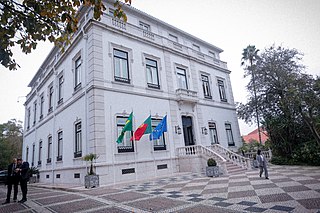
Palacete de São Bento, formally the Official Residence of the Prime Minister, is a late 19th-century mansion that presently serves as the official residence of the prime minister of Portugal. It is located in the Lisbon civil parish of Estrela, within the grounds of São Bento Palace, the seat of the Portuguese parliament.
42. Jardim Alfredo Keil
The Alfredo Keil Garden is a small garden of romantic design, located in Praça da Alegria in Lisbon. Sitting on a terrace, it features examples of exotic vegetation and a pond with fountains. On the west side of the garden is a bust of Alfredo Keil, musician, painter and poet, composer of the music of A Portuguesa, the current Portuguese national anthem.
43. Jardim Gulbenkian
The Gulbenkian Park also known as Gulbenkian Garden is located in Lisbon, Portugal. It was created in 1969 and is part of the cultural center where the headquarters of the Calouste Gulbenkian Foundation, Gulbenkian Museum and the José de Azeredo Perdigão Modern Art Centre are situated enriching the cultural importance of the garden.
Wikipedia: Gulbenkian Park (EN), Heritage Website Sipa, Heritage Website
44. Museu Nacional da Música
The Museu da Música is a museum in Lisbon, Portugal. The museum primarily features musical instruments; among its holdings is a 1725 Stradivarius cello once owned and played by King Luís I of Portugal (ruled 1861–1889.
45. Igreja de Santa Catarina
The Church of Santa Catarina, also referred to as the Church of the Convent of the Paulistas, the Parish Church of Santa Catarina and the Church of Santa Catarina do Monte Sinai, was built in the seventeenth century, located in Calçada do Combro, parish of Misericórdia, in Lisbon.
46. Museu Calouste Gulbenkian - Centro de Arte Moderna

The Centro de Arte Moderna Gulbenkian (CAM) is a major venue for contemporary art in Portugal and holds one of the largest collections of modern and contemporary Portuguese artworks. Its building is currently under renovation and will reopen to the public, with a reformulated building, by Kengo Kuma, to celebrate its 40th anniversary in 2023. The CAM continues to develop its activities beyond the limits of the building until its reopening.
47. Cinemateca
Cinemateca Portuguesa is a public institution dedicated to the diffusion and preservation of the filmic arts in Portugal and, in particular, of Portuguese Cinema. It functions as a film archive and promotes daily screenings of worldwide films at its headquarters, now located on Rua Barata Salgueiro in Lisbon. It was established in 1948.
48. Reservatório da Patriarcal
The Patriarchal Reservoir is located in the basement of Praça do Príncipe Real, and was designed in 1856 by the French engineer Louis-Charles Mary. It was built between 1860 and 1864 to serve the water distribution network of the city of Lisbon, constituting in Lisbon times.
Wikipedia: Reservatório da Patriarcal (PT), Website, Heritage Website Sipa
49. Museu Geológico
The Geological Museum is a museum in Lisbon that brings together and exhibits thousands of specimens of Paleontology, Archaeology and Mineralogy in two large rooms, and is housed in the same building as the Lisbon Academy of Sciences, at number 19 of Rua da Academia de Ciências de Lisboa.
50. Chafariz d'El Rei
The Fountain of El-Rei, which was the first public fountain in the city of Lisbon, was built in the thirteenth century, in the reigns of King Afonso III and King Dinis, taking advantage of the excellent waters of the Alfama slope.
Wikipedia: Chafariz de El-Rei (PT), Heritage Website Sipa, Heritage Website
51. Galerias Romanas
The Roman galleries of Rua da Prata or cryptoporticus of Rua da Prata, are an architectural structure that is located in the basement of Rua da Prata and Rua da Conceição, extending to Rua do Comércio, in downtown Lisbon.
52. Igreja de São Cristóvão e de São Lourenço
The Church of São Cristóvão is a church located at the top of the Escadinhas de São Cristóvão, in Lisbon. Due to the strong need for preservation, the Church has been added to the biennial list of World Monuments Watch.
53. Museu do Oriente
The Museum of the Orient in Lisbon, Portugal is a museum of Asian art. The museum opened in May, 2008, and is located in a refurbished industrial building on the Alcântara waterfront. The collection includes Indonesian textiles and shadowplays, Japanese screens, antique snuff bottles, crucifixes made in Asia for Western export, and the Kwok On Collection of masks, costumes, and accessories.
54. Parque do Vale do Silêncio
The Vale do Silêncio Urban Park, also known as Mata do Vale do Silêncio or Mata dos Olivais, is a public garden located in Lisbon, in the parish of Olivais. It is located in the area between the following streets: Avenida de Berlim, Avenida Cidade de Lourenço Marques, Rua Cidade de Nova Lisboa and Rua Cidade de Malange.
55. Dom José I
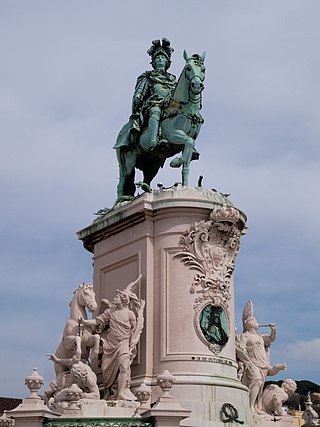
The equestrian statue of King José I is located in Praça do Comércio, in the city of Lisbon, Portugal, and is by the sculptor Joaquim Machado de Castro. It is a remarkable sculptural work: it is the first equestrian statue made in Portugal, and it is also, in this country, the first sculptural monument on the public road dedicated to a living person. It was also the first statue of its size to be cast from a single jet, in Portugal, and one of the first to be cast in the world.
56. Museu da Marioneta
The Museu da Marioneta has been located since November 2001 in the Convent of Bernardas in Lisbon, Portugal, establishing itself as the first museum in Portugal entirely dedicated to the interpretation and dissemination of the history of puppetry, covering the history of this art form across the world, presenting the different types of puppets and the different approaches they allow, with special emphasis on Portuguese puppets.
57. Porta do Mar
The old Porta do Mar, currently known as the Dark Arch, is an old city gate inserted in the Moorish fence of Lisbon. It is located in Rua dos Bacalhoeiros, in front of the crossing door of the Church of Conceição Velha. It is also called Postigo da Rua das Canastras, because it is at the end of this street.
58. Water Gardens
The Mário Ruivo Garden, formerly known as the Water Gardens, is a garden in Lisbon. It is located in the riverside area of Parque das Nações. It was done alongside Expo 98, whose main theme was the oceans and water. To this extent, the garden has a series of educational and sports facilities that have water as their main theme. Such instruments concern several different historical eras and cultures. It consists of several parts: the Palm Gardens, the Mediterranean Orchard, the Lake of Ulysses, the Waterfall Building and the Hydraulic Garden.
59. Basilica of Our Lady of the Martyrs
The Basilica of Our Lady of the Martyrs Is a Catholic church located on Rua Garrett, in Chiado, Lisbon, Portugal in the parish of St Mary. Made in the baroque and late neoclassical style, it is an example of the quality of religious architecture in the context of the Pombaline rearrangement of Lisbon.
60. Jardim do Cabeço das Rolas
Cabeço das Rolas Garden is a garden in Lisbon. It is located in Alameda dos Oceanos, in the Parque das Nações area. It is part of the Architectural Heritage Inventory (SIPA). It was designed by the landscape architect Gonçalo Ribeiro Telles, a work for which he was well known.
61. Banhos de São Paulo
The São Paulo Baths Building, which is currently the headquarters of the Order of Architects, was a public bathhouse built between 1850 and 1858, according to the plans of Pedro José Pézerat, located in the neighborhood of São Paulo, in the parish of Misericórdia, in Lisbon.
62. Palácio Pimenta
The Museu de Lisboa is a museum network in Lisbon, Portugal, dedicated to the history of Lisbon, from prehistoric times to the modern day. The museum is housed in various buildings across Lisbon, including Pimenta Palace in Campo Grande, the Praça do Comércio in the Lisbon Baixa, and the Casa dos Bicos in Alfama, among others.
63. Luís de Camões
The Camões Monument is a monument located in Luís de Camões Square in the Chiado neighbourhood of Lisbon, Portugal. The monument comprises a tall bronze statue of Luís de Camões, the national poet, on a lioz limestone pillar surrounded by eight smaller statues of leading figures of Portuguese culture and literature in the Age of Discoveries: Fernão Lopes, Pedro Nunes, Gomes Eanes de Zurara, João de Barros, Fernão Lopes de Castanheda, Vasco Mouzinho de Quevedo, Jerónimo Corte-Real, and Francisco de Sá de Meneses.
64. Jardim Cesário Verde
The Cesário Verde Garden is a small garden in Lisbon with about 0.25 ha., located in Praça Ilha do Faial, parish of Arroios, former São Jorge de Arroios, where you can appreciate the bust of the poet Cesário Verde by Maximiano Alves, inaugurated in 1955.
65. Palácio Quintela
The Quintela Palace, also known as the Palace of the Baron of Quintela and Count of Farrobo, is a palace located in the parish of Misericórdia, in Lisbon, built on the initiative of the family of the Barons of Quintela for their residence at the end of the eighteenth century.
66. Parque Mayer
Parque Mayer is a theatrical and entertainment district in the Portuguese capital of Lisbon. Originally created as a summer amusement park, it at one time had four theatres, although one was demolished in 2015 and another has not been used since 1992. Successive proposals have been made for upgrading the area, but none has yet come to fruition.
67. Jardim da Quinta de Santa Clara
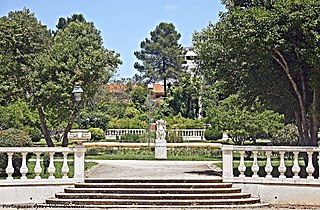
The Quinta de Santa Clara Garden or Ameixoeira Garden is a Baroque-style garden located in Ameixoeira, Lisbon. It was an old eighteenth-century farmhouse, having been donated to the Lisbon City Council between 1974 and 1977. It includes a children's playground and kiosk.
68. The combatants Overseas
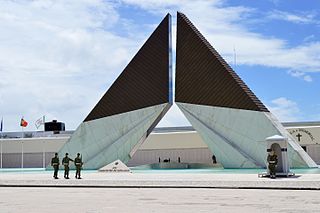
The Monument to the Overseas Combatants is a monument located next to the Bom Sucesso Fort in Belém, Lisbon. It was created to honor all the military personnel who fought in the African War (1961-1974), in defense of the Homeland. Created in 1991 by a team led by architect Francisco José Ferreira Guedes de Carvalho.
69. Teatro Variedades
The Teatro Variedades was a theatre in Lisbon, capital of Portugal, that offered variety or revue shows of the type known in Portugal as Teatro de Revista. Opened in 1926, it has not been used since 1992, but as of 2020 there were active plans to construct a new theatre on the site, incorporating elements of the existing building.
70. Museu da Farmácia Lisboa
The Pharmacy Museum of Lisbon is a museum dedicated to the history of pharmaceutical activity. It was established in the building of the National Association of Pharmacies, in the Santa Catarina district of the Portuguese capital, and was inaugurated in June 1996. A branch of the museum was created in the city of Porto in 2010. The first pieces that formed the Lisbon museum were those donated from the private collection of Dr. Salgueiro Basso. These were followed by several donations from other pharmacists and institutions, following a request sent out by the association, which were augmented by purchases worldwide. The collection represents over 5,000 years of health history.
71. Estação Fluvial Sul e Sueste
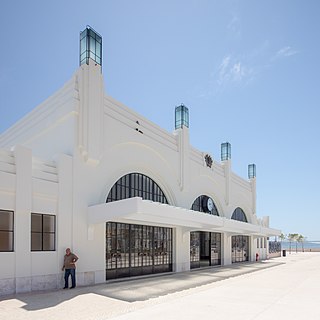
The South and Sueste River Terminal, originally called South and Sueste Station, is located in the city of Lisbon, Portugal. It was built after a long period of planning, during which several proposals were submitted for its shape and location, and was for example outlined as a complete railway and river station, as part of the abandoned plan for a railway line between Santa Apolónia and Cais do Sodré. It was inaugurated on May 28, 1932, and at that time was considered an extension of trains to and from Barreiro, on the current Alentejo Line. In November 2019, the municipality started a deep rehabilitation plan for the marginal area next to Praça do Comércio, which included the requalification of the station building.
Wikipedia: Estação Fluvial Sul e Sueste (PT), Heritage Website Sipa, Heritage Website
72. Museu Nacional de Arte Contemporânea - Museu do Chiado
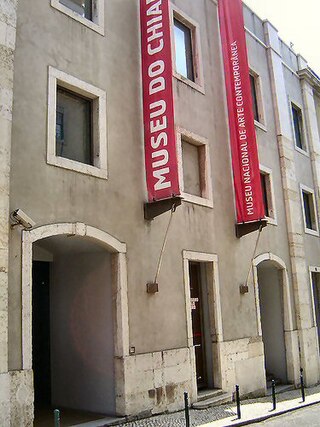
The National Museum of Contemporary Art (MNAC), founded in 1911, is a contemporary art museum located in the historic center of Lisbon. The MNAC is housed in part of the former Convent of São Francisco da Cidade, which also houses, in the remaining area of the convent complex, the Faculty of Fine Arts of the University of Lisbon and the National Academy of Fine Arts.
73. Teatro Thalia
The Thalia Theatre or Talia Theatre, also known as the Laranjeiras Theatre, is a small theatre adjacent to the Laranjeiras Palace, both of which were initially owned by Joaquim Pedro Quintela, 1st Count of Farrobo, located on Estrada das Laranjeiras, in the parish of São Domingos de Benfica, in Lisbon, in the vicinity of the current Lisbon Zoo.
74. Muralha Fernandina
The Fernandina Fence, also known as the Fernandine Walls of Lisbon, are the walls of the city of Lisbon corresponding to the extension of the old fence of the era of Caesar, carried out by King Ferdinand I in 1373.
75. Museu Medeiros e Almeida
The Medeiros e Almeida Museum, formerly the Medeiros e Almeida House-Museum, is one of the main private collections of Portuguese decorative arts, brought together by the businessman, collector and patron António de Medeiros e Almeida (1895-1986).
Share
How likely are you to recommend us?
Disclaimer Please be aware of your surroundings and do not enter private property. We are not liable for any damages that occur during the tours.
